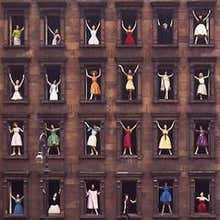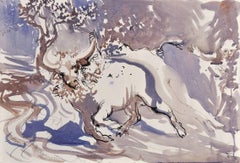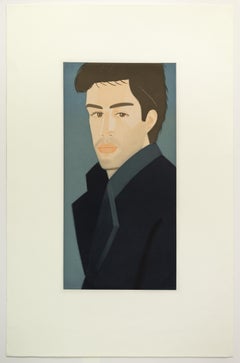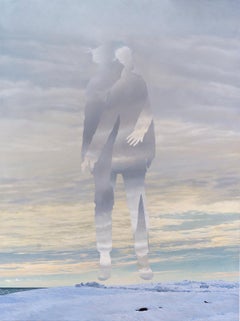Art Dealers Association of America

1990s Contemporary Art Dealers Association of America
Ink, Paper, Watercolor
1990s Contemporary Art Dealers Association of America
Screen
21st Century and Contemporary Art Dealers Association of America
Aquatint
1990s Art Dealers Association of America
Aquatint
21st Century and Contemporary Contemporary Art Dealers Association of America
Linocut, Mulberry Paper
2010s Contemporary Art Dealers Association of America
Egg Tempera, Panel
2010s Contemporary Art Dealers Association of America
Canvas, Paper, Acrylic
1930s American Modern Art Dealers Association of America
Ink, Paper, Watercolor
Early 2000s Art Dealers Association of America
Photographic Paper, Digital, Pigment, Archival Pigment, Digital Pigment
1980s Art Dealers Association of America
Silver Gelatin, Photographic Paper
2010s Art Dealers Association of America
Woodcut
2010s Contemporary Art Dealers Association of America
Birch, Egg Tempera
2010s Art Dealers Association of America
Photographic Paper
Mid-19th Century American Realist Art Dealers Association of America
Canvas, Oil
1970s Art Dealers Association of America
Archival Pigment, Digital Pigment
1990s Contemporary Art Dealers Association of America
Woodcut
2010s Contemporary Art Dealers Association of America
Canvas, Oil
2010s Art Dealers Association of America
Silver Gelatin
2010s Contemporary Art Dealers Association of America
Linen, Oil
2010s Contemporary Art Dealers Association of America
Oil
2010s Contemporary Art Dealers Association of America
Conté
1990s Contemporary Art Dealers Association of America
Aquatint
2010s Realist Art Dealers Association of America
Paper, Gouache
1920s Other Art Style Art Dealers Association of America
Silver Gelatin
Art Dealers Association of America
Oil, Canvas
21st Century and Contemporary Contemporary Art Dealers Association of America
Canvas, Oil
2010s Contemporary Art Dealers Association of America
Ink, Oil, Panel
1970s Art Dealers Association of America
Photographic Paper
1980s Modern Art Dealers Association of America
Canvas, Oil
2010s Contemporary Art Dealers Association of America
Canvas, Oil
19th Century American Realist Art Dealers Association of America
Canvas, Oil
2010s Contemporary Art Dealers Association of America
Egg Tempera, Oil, Panel
21st Century and Contemporary Contemporary Art Dealers Association of America
Acrylic, Ink, Paper
1980s American Impressionist Art Dealers Association of America
Oil, Panel
2010s Art Dealers Association of America
Photographic Paper, Color, Archival Pigment
Mid-20th Century Abstract Art Dealers Association of America
Etching
21st Century and Contemporary Photorealist Art Dealers Association of America
Pastel
2010s Contemporary Art Dealers Association of America
Gouache, Paper
2010s Realist Art Dealers Association of America
Oil, Panel
Late 20th Century Outsider Art Art Dealers Association of America
Canvas, Oil, Panel
2010s Abstract Art Dealers Association of America
Canvas, Oil
Late 20th Century American Impressionist Art Dealers Association of America
Oil, Panel
1990s Contemporary Art Dealers Association of America
Aquatint
21st Century and Contemporary Abstract Art Dealers Association of America
Monotype
2010s Contemporary Art Dealers Association of America
Canvas, Oil
21st Century and Contemporary Art Dealers Association of America
Oil
1920s Modern Art Dealers Association of America
Watercolor
2010s Contemporary Art Dealers Association of America
Archival Paper, Photographic Paper, Digital, Archival Pigment, Digital P...
2010s Contemporary Art Dealers Association of America
Pigment
21st Century and Contemporary Contemporary Art Dealers Association of America
Monotype, Paper
1990s Modern Art Dealers Association of America
Linen, Oil
21st Century and Contemporary American Realist Art Dealers Association of America
Canvas, Acrylic
2010s Contemporary Art Dealers Association of America
Canvas, Mixed Media, Oil
1970s American Impressionist Art Dealers Association of America
Oil, Panel
2010s Contemporary Art Dealers Association of America
Archival Pigment
1930s Modern Art Dealers Association of America
Paper, Watercolor
1970s Art Dealers Association of America
Photographic Paper, Color, Polaroid
1960s Surrealist Art Dealers Association of America
Rag Paper, Etching
1990s Contemporary Art Dealers Association of America
Etching
Early 2000s Contemporary Art Dealers Association of America
Photogravure





